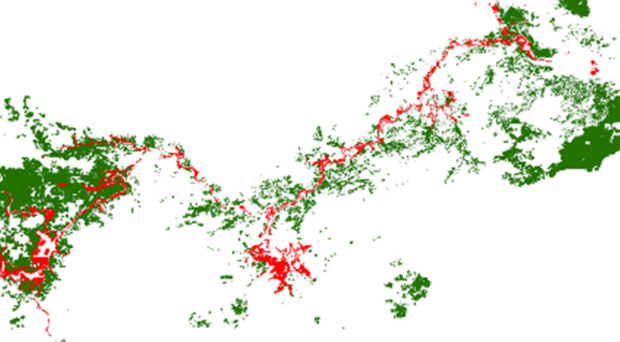
In Asia, the devasting parasitic disease schistosomiasis is primarily caused by Schistosoma japonicum, a zoonotic species with infections known to occur widely in China, the Philippines, and Indonesia.
The only country to have successfully interrupted transmission of S. japonicum in the region is Japan, which did so in 1974 (impressively, before delivery of Praziquantel), although several other countries are expected to do so by 2030. China, which was the most heavily affected by schistosomiasis, has made significant progress. A multi-stage national control program reduced cases from around 11 million in the 1950s to less than 100,000 today, and has also dramatically reduced infections in cattle. The majority of endemic counties in China have now achieved transmission interruption or elimination as a public health problem.
As in Japan, snail control was the primary method of preventing infections before the use of praziquantel, and remains a core element today. From the late 1950s to 2020, snail-infested areas decreased from 8.2 billion m² to 3.6 billion m², with the intermediate host snail of S. japonicum (Oncomelania hupensis) eradicated from just below half of schistosomiasis endemic counties.
The Yangtze River, as well as its major branches and flood plains, have historically been the main parasite transmission and snail-infested areas in China. Today, around 97% of snail-infested areas remain in the Yangtze River valley, where water conservancy projects, flood control measures, and agricultural irrigation systems have altered hydrological conditions, affecting the distribution of snails (for better or for worse).
Over 30,000 km of levees and 50,000 reservoirs have been built along the river to control water levels and limit flooding. These efforts have undoubtedly affected snail habitats and changed the distribution of O. hupensis in China.
In a recent paper, researchers from several regional and national Chinese institutes of parasitic diseases sought to evaluate the impact of these levees along the Yangtze River and schistosomiasis-endemic lakes on the distribution of O. hupensis by comparing its presence inside and outside the river.
Snail surveying, trend, and hotspot analysis

Snail habitats in the seven endemic provinces along the Yangtze River (Shanghai, Zhejiang, Jiangsu, Anhui, Jiangxi, Hubei, and Hunan), were identified through systematic and interval sampling of O. hupensis, as well as from historical records on snail distribution.
For each area, habitat shape was mapped using GPS and GIS, and information on habitat type (marshland, water network or hilly landscape), size, year of discovery, range of snail-infested area, snail density, and ‘accumulated snail-infested range’ (maximum range over time) were collected.
Levees along the Yangtze River and its branches were mapped using GPS and remote sensing, with snail habitats categorised as ‘inside’ or ‘outside’ the river system based on their location relative to the levees. Hotspot analysis to identify clusters of snail density throughout the river, and trends in snail-infested ranges were tracked over time.
Contemporary hot and cold spots
The survey results showed that snail density hotspots were prevalent both inside and outside the Yangtze River.
Inside the river, approximately 616,000 living snails were identified. Hotspots were distributed throughout its length, while cold spots are mainly localised to Poyang and Dongting lakes, regions that were previously major endemic areas for schistosomiasis. This may be due to construction of the Three Gorges Dam, one of the world’s largest power stations, which has dramatically changed the hydrological landscape downstream (where the lakes are located).
Outside the river, over 2.8 million snails were collected, although were found to have a similar density to those collected inside the river system. Hotspots were found in floodplain and marsh areas of Hubei and Anhui provinces, while the Yangtze River delta had become a cold spot.

Flood management, changing snail habitat dynamics, and schistosomiasis control
Since the 1950s, China has undergone significant environmental and infrastructural changes, impacting the distribution and management of snail habitats and consequently, the control of schistosomiasis.
Overall, the researchers recorded 216,182 snail habitats during the survey. The majority of these habitats (82.04%) were located in waterlogged and flood-prone areas, with marshlands being the predominant habitat type identified (64.72%).
Flooding traditionally enhances the connectivity between aquatic habitats and is known to enable snail migration, thereby promoting the spread of schistosomiasis and making disease control more difficult. However, since the 1950s, large-scale flood management initiatives, including levee construction and reservoir development, have altered the spatiotemporal dynamics of O. hupensis populations in and around the Yangtze River.

These flood management strategies have significantly reduced the frequency and intensity of flooding. This in turn limits the ability of snails to migrate throughout the river where they form isolated populations more vulnerable to control measures. The researchers found that, since the 1950s, approximately 73% of the accumulated snail-infested range in China has been eliminated, representing a major factor in the successful schistosomiasis control seen in China.
Outside the Yangtze River, around 210,000 snail habitats were identified. Compared to historical snail distributions, this area has seen a considerable decline in the total number of snails (about 91%), partly due to the effective reduction in flooding and habitat modifications such as levees, land reclamation, and urbanisation that increased snail habitat fragmentation.
Conversely, inside the river, snail habitat distribution has remained relatively stable since the 1970s, likely due to the large, interconnected nature of the habitats, acting to maintain snail populations despite flood management interventions. Approximately 7,500 habitats covering 5,071.96 million m² were identified inside the river system. Despite ongoing control efforts, high snail densities persist, particularly in Hubei province, reflecting the resilience of these habitats.
Schistosomiasis: down but not out
In summary, the interplay between flood management strategies and snail habitat dynamics has had a profound impact on schistosomiasis control in China. While the reduction of flooding has facilitated control efforts and led to significant decreases in snail populations outside the Yangtze River, challenges remain inside the river where snail densities continue to be high despite ongoing control measures.
Continued monitoring and surveillance, especially in historical endemic regions and water management areas, is crucial for effective snail control and schistosomiasis elimination.

Comments